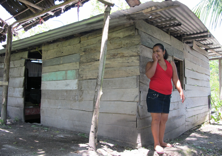Housing Series: Sustainable Communities Generating Sustainable Habitats
Editor’s Note: The following post is part of NextBillion’s month-long series in partnership with Ashoka focused on affordable housing. Please follow the entire series HERE and join the discussion with your thoughts and insights.
Humanity is losing the global race to provide safe and sustainable habitat for itself. By 2030, world population is projected to be 9 billion: 3.6 billion will live in precarious housing conditions, with a terrifying 25 percent of them, homeless.
If we truly want to solve the affordable housing problem, first we must confront a critical equation in a way that creates wealth for builders, and is sustainable for the public and the planet.
Right now, the worldwide equation is framed as: More unplanned and shoddy slum urbanization equals more rural and urban impoverishment.
Rural communities become receptacles of solid wastes, contaminated waters, labor migration, family disruption and lack of income opportunities. Communities are then abandoned, their residents attracted by a false image of urban wealth and better living conditions. The reality these migrants face in slums is lack of decent housing, sanitation, overcrowded narrow streets with fragile, dangerous structures, insecure tenure, violence, human trafficking, lack of water and an endless list of social and health diseases and habitat degradation. And these social ills hurt cities’ and nations’ economic prosperity and social and political stability.
A Better Equation
A better equation is: Building sustainable human habitats and housing wealth creation in communities equals better affordable housing, community cohesion, environmental protection and jobs and economic growth. In practice, the equation rests on principles of social inclusion, financial education, technical assistance to use construction best practices, and social financing.
We began Echale a Tu Casa over 25 years ago as a nonprofit to help low-income families improve the safety, health and hygiene conditions of their homes in Mexico. We soon realized that philanthropy would not permit us to have much of an impact on the problems that generated these living conditions. So we created a social enterprise built on an integrated system of savings, credit and subsidies for families who were not being served either by private home developers or the public housing agencies here in Mexico.
In Mexico today there is an 8.9 million affordable housing deficit, which means 49 million people are without safe, adequate housing. Of the 8.9 million households, only 3 million have access to public assistance or credit for housing from Infonavit, Fovissste or a private home finance source. This means that 5.9 million households – 32 million people – are still excluded. These households are our target population: those with some land but no funds to build a home, or who live in a room whose walls are made of corrugated cartons.
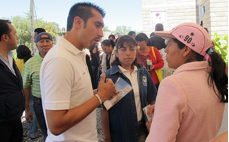
We work with 20-30 households in the community. First, we meet with them to listen to their needs and gain their trust. We tell them about our work in other communities, the innovative building blocks we’ve invented that are ecologically friendly and build strong, safe houses. We let them know we’ll help them get credit toward building the home if they agree to save and invest 10 percent of its total cost to start.[1]
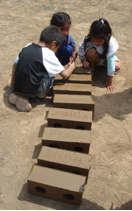
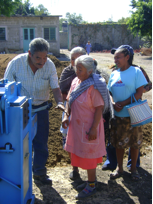
If they agree to work with us, we begin courses in financial education (to help them manage their family budget, see options for new income, and develop saving patterns), start the process to link them to a microcredit agency to get a mortgage or home improvement loan, and technical capacity-building in sustainable building materials and practices to build their own new homes.[2]
Then we introduce them to the innovative, eco-friendly and strong “adoblock” – a brick designed from 90 percent of local earth, with benefits of being strong, buffering noise and temperature extremes, resistant to water and, best of all, produced at low cost by the community itself.[3]
We bring in machines to manufacture these eco-bricks and teach the community how to use them to generate enough materials for all the houses to be built.[4]
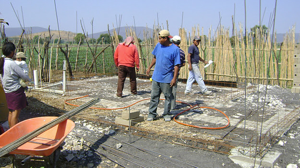
We help them plan their new home layout, including other eco-friendly, simple and cost-effective technologies, such as catching and storing rainwater for drinking and cooking, gray-water filtering for recycling waste water, and solar photovoltaic cells to generate electricity.
As this work continues, we find that the entire fabric of this community evolves into teamwork, excited about implementing these new opportunities, who together create new skills and jobs, which restructures the social fabric of individual families and the entire community. To date, Echale a tu casa has helped communities build nearly 26,000 homes, generating over 130,000 jobs and US $65 million of income.
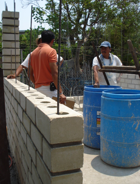
Another track for Echale de tu casa is to make living conditions better in rural areas, to improve lives where communities exist instead of increasing urban migration.
Just one year ago, poor communities in Calakmul in Campeche, one of the largest Mayan culture cities in Mexico, were threatening deforestation of the world’s largest biosphere. In order to stop families from cutting down trees to build low-quality shack shelters and, while there, engaging in clandestine sales of endangered species and archaeological relics, instead of bringing in police forces to stop, Echale a tu casa started technical 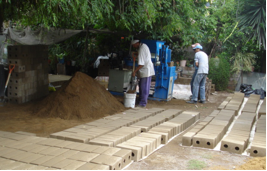 workshops for green housing construction and topics including sustainability. We began an on-site production system of green construction materials. Mortgage microfinance was offered. After one year, 1,000 strong, sustainable homes have been built, creating family income from 500 new jobs created, an economy spillover of US $6.5 million and the protection of the environment by the same community.
workshops for green housing construction and topics including sustainability. We began an on-site production system of green construction materials. Mortgage microfinance was offered. After one year, 1,000 strong, sustainable homes have been built, creating family income from 500 new jobs created, an economy spillover of US $6.5 million and the protection of the environment by the same community.
These results provide all involved with Echale a tu casa the enthusiasm and energy to share our processes and results with many in the affordable housing sector.
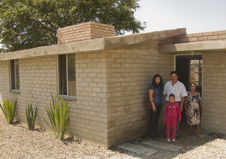
[1] For an excellent summary video of the process, visit www.echale.com.mx/ and click on the video (available in Spanish and English). It is an excellent summary of how Echale transforms home improvements from long-term struggle to efficient and sustainable housing. Then click on the video about “adoblocks” – with vivid images of how the entire community participates in making these eco-friendly materials, creating jobs and beautiful, affordable and sustainable homes.
[2] Echale a tu casa makes alliances with different financial institutions to finance 90% of the costs of the building projects: for example, private companies such as New Ventures or public sources such as Conavi, la Sociedad Hipotecaria Federal (SHF), el Consejo Nacional de Vivienda Verde Sustentable (Convives) and Housing Institutes in Mexican states, who have developed lines of credit for affordable housing.
Adoblocks result from engineering innovation by Ital Mexicana and the Institute CRAT of the University of Grenoble in France. This innovation was the first ecological construction system based on earth as a material more resistant than concrete and made by the community – that is, the manufacturing of the blocks is done in and by the community, not providing prefabricated building materials as has been done in the past. This adds economic value and appropriate technology benefits to the communities themselves.
The machine is a hydraulic press that exerts pressure of more than 40 tons to form each brick. Tests confirm the adoblock is stronger than one of concrete or clay. Regular tests evaluate brick quality and adoblock always comes out as strongest.
- Categories
- Environment, Health Care, WASH
